Lecture 21
Video
Genetic Algos
- fittest among population..?
- search heuristic
- reflects process of natural selection where fittest individuals are selected for reproduction in order to produce offspring of next generation
- steps?
- crossover
- offsprings
- mutation
- concepts?
- population
- attributes
- fitness
Phases
- initial population
- fitness function
- selection
- crossover
- mutation
Initial population
- set of individuals = population
- each individ is soln to prob u wanna solve
- indiv is characterized by set of parameters(variables) known as geens
- genes are joined into a string to form chromosome(soln)
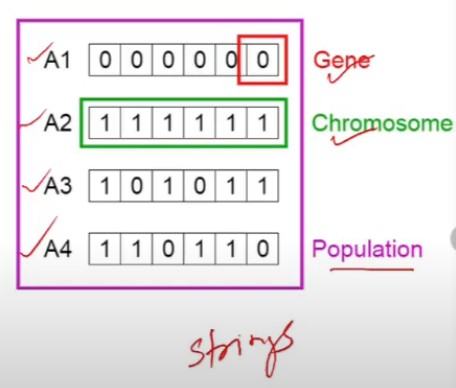
Fitness function
- detemines how fit an individual is (ability of an individ to compete with other individuals)
- softmax fn aayega
- gives a fitness score to each individual
- probability that an individual will be selected for reproduction is based on its fitness score
Naturak Selection - Select the best, discard the rest
- population size is fixed
- idea is to select fittest indiv and let them pass their genes to next gen
- population size is fixed always
- 2 bacche banaye, toh 2 weakest hata bhi die
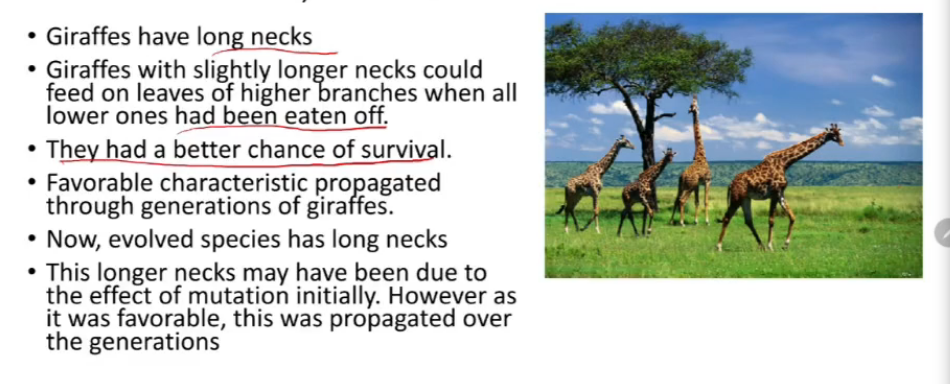
Crossover
- most significant phase in genetic algo
- for each pair of parents to be mated, a crossover point is chosen at random from within the genes
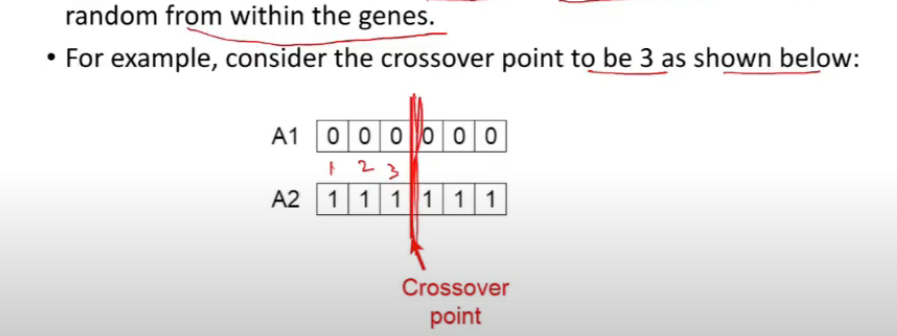
- offspring are created by exchanging genes of parent among themselves until the crossover point is reached
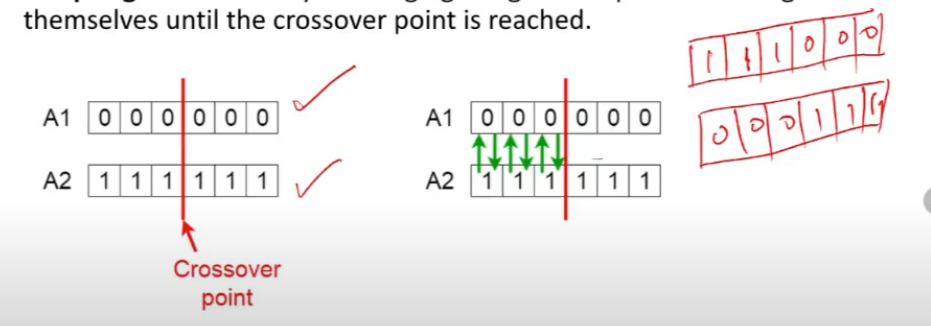

- popu size is fixed, so remove 2 literalls which are weakest
Mutation
- some of genes can be subjecte to mutation with low random prob
- implies that some bits in bit string can be flipped
- mutation occurs to maintain diversity within population and prevent premature convergence (converging to local maxima)
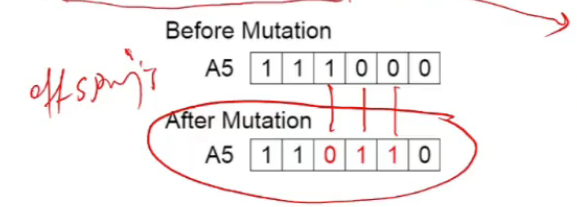
Temination
- algo terminates if populn converged
- i.e. does not produce offspring which are significantly diff from prev generation
- then we say it has provided set of solns to our prob
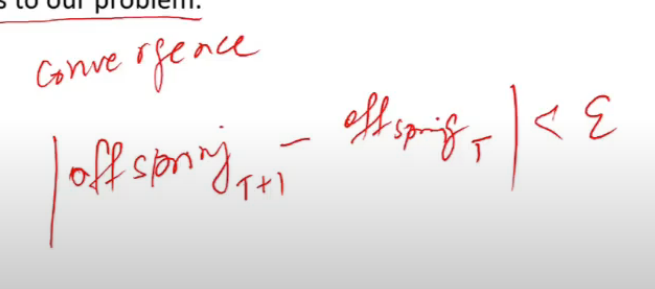
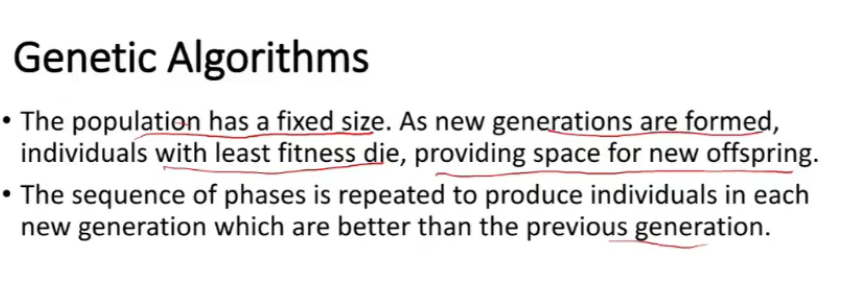
Flow Chart

The algorithm
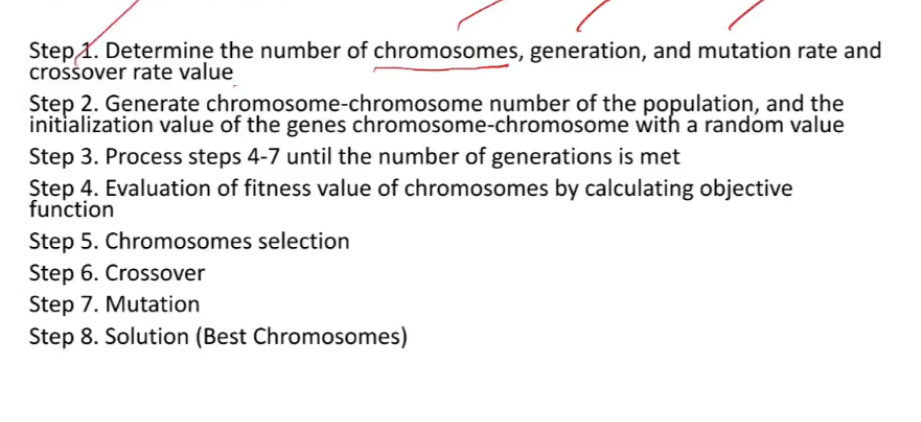
Mathematical Equality Problem
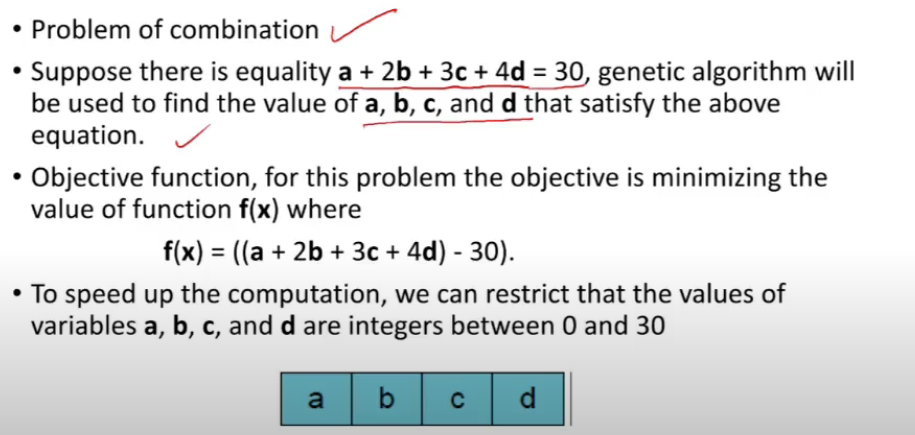
- max one problem
- 10 length string
- n = 6 = individuals
- 10 = attributes
- how to generate population?
- take a fair coin, toss it 60 times
- f(s1) = number of 1s in s1, f(s2) = …
- now selection?
- on basis of f(i) i = 1..6
- if sabki same f hai, would it matter kaunsa select kia? naah
-
Our Problem
- Step 1
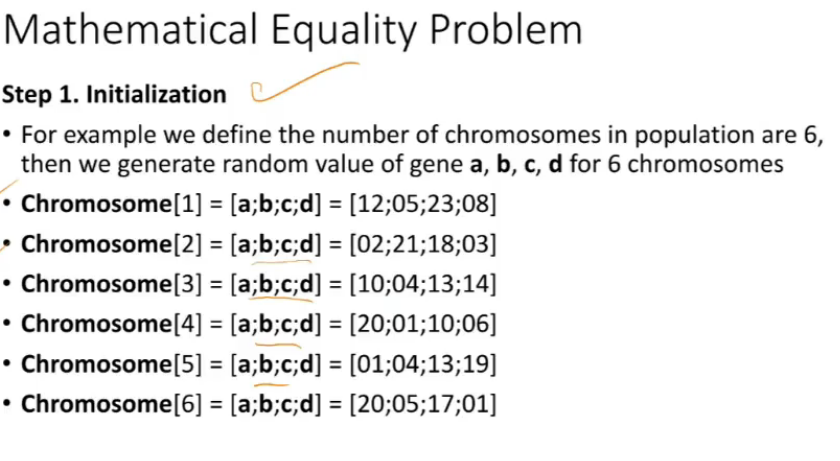
- Step 2

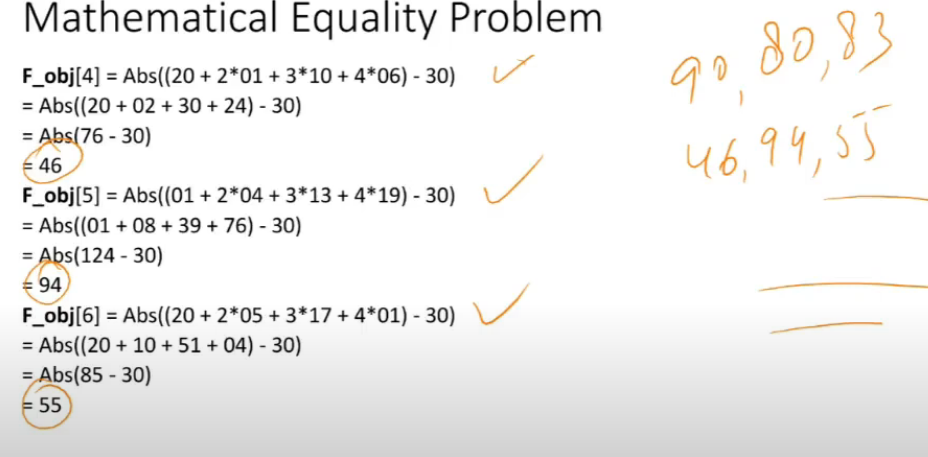
- Step 3

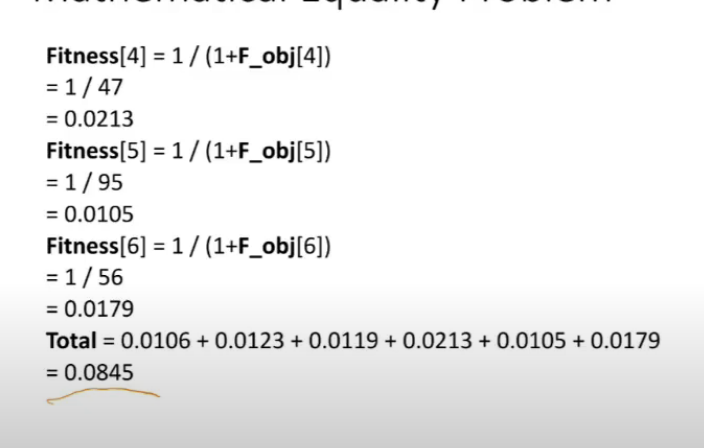
- now find probabilities = fitness[i] / sum (fitness i)
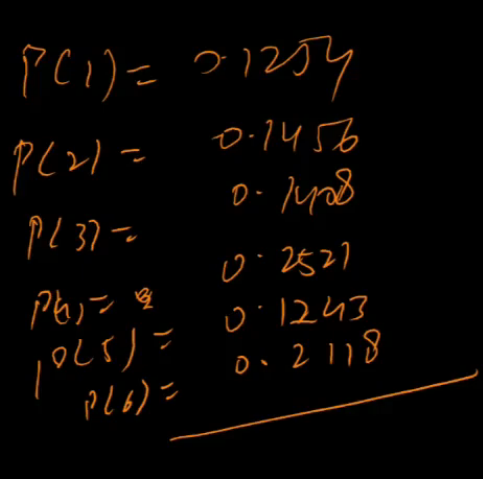
-
c4 is highest prob wala
-
Step 4
- pick 2 best and crossover kara de
- c4 and c6 hai best
- get 2 offspring, remove 2 weakest ones (c5, c1)
-
and unme mutation
- after 1 iteration, 2 chromosomes (c1, and c5) ki values changed ho jayengi and baaki sab same rahenge